- Home
- Clive Cussler
Dragon dp-10
Dragon dp-10 Read online
Dragon
( Dirk Pitt - 10 )
Clive Cussler
A PLUNDERED TREASURE IN THE PHILIPPINE ISLANDS . . . A NUCLEAR EXPLOSION IN THE PACIFIC . . . AN EVIL PLOT TO BRING THE WEST TO ITS KNEES!
A Japanese cargo ship bound for the United States is instantly, thunderously vaporized by Japanese fanatics with a chilling plan to devastate and destroy the Western powers. While Washington bureaucrats scramble, a brutal industrialist commands his blackmail scheme from a secret island control center. But from the ocean depths, NUMA agent DIRK PITT® is igniting a daring counterattack. Battling death-dealing robots and a human-hunting descendant of samurai warriors, Pitt alone controls the West’s secret ace in the hole: a tidal wave of destruction waiting to be triggered on the ocean floor!
“Pitt has been compared to other popular adventure heroes, but Cussler has created a one-of-a-kind … [DRAGON is] an imaginative and suspenseful novel.”
—Fort Lauderdale Sun-Sentinel
DRAGON
Hideki Suma: The blue-eyed multimillionaire was the most powerful ultranationalist in Japan—with a plan to destroy any nation that dared to thwart the rise of his new empire …
Moro Kamatori: The collector of antique weapons also collected human heads on Suma’s private island, where he would make his most pleasurable hunt of all—for Dirk Pitt!
____________
“From one hair-raising scene to another, DRAGON is an incredible and satisfying thriller… . Full of swashbuckling drama and enough twists and turns to keep the reader’s attention to the last page… This worthy successor to the ongoing Dirk Pitt saga … is certain to entertain and engross suspense fans.”
—Chattanooga News—Free Press
“Cussler once again bounces to the top of his field by combining current events with an active imagination. … A fine writer. … A spectacular ending.”
—Ocala Star-Banner
“The master storyteller of undersea adventures… has provided a superb story… Thrill-per-page momentum … [an] incredible finale.”
—Press-Enterprise (Riverside, CA)
Dirk Pitt® Adventures by Clive Cussler
Flood Tide
Shock Wave
Inca Gold
Sahara
Dragon
Treasure
Cyclops
Deep Six
Pacific Vortex
Night Probe!
Vixen 03
Raise the Titanic!
Iceberg
The Mediterranean Caper
By Clive Cussler and Craig Dirgo
The Sea Hunters
Clive Cussler and Dirk Pitt Revealed
From the NUMA Files by Clive Cussler with Paul Kemprecos
Serpent
Blue Gold
Available from POCKET BOOKS
POCKET BOOKS, a division of Simon & Schuster Inc.
1230 Avenue of the Americas, New York, NY 10020
Copyright © 1990 by Clive Cussler Enterprises, Inc.
First Pocket Books printing July 1991
Dennings’ Demons
August 6, 1945
Shemya Island, Alaska
THE DEVIL CLUTCHED a bomb in his left hand, a pitchfork in his right, and smirked impishly. He might have appeared menacing if it wasn’t for the exaggerated eyebrows and the half-moon eyes. They gave him more of a sleepy gremlin look than the fiendish expression expected from the ruler of hell. Yet he wore the customary red suit and sprouted regulation horns and long forked tail. Oddly, the clawlike toenails of his feet were curled over a gold bar that was labeled 24 K.
In black letters above and below the circled figure on the fuselage of the B-29 bomber were the words Dennings’ Demons.
The aircraft, named for its commander and crew, sat like a forlorn ghost under a sheet of rain driven southward over the Aleutian Islands by a wind from the Bering Sea. A battery of portable lights illuminated the area beneath the open belly of the plane, casting wavering shadows from the ground crew on the glistening aluminum body, Flashes of lightning added to the haunting scene, stabbing the darkness of the airfield with disturbing frequency.
Major Charles Dennings leaned against one of the twin tires of the starboard landing gear, hands shoved deep into the pockets of his leather flight jacket, and observed the activity around his aircraft. The entire area was patrolled by armed MP’s and K-9 sentries. A small camera crew recorded the event. He watched with uneasy trepidation as the obese bomb was delicately winched into the modified bomb bay of the B-29. It was too large for the bomber’s ground clearance and had to be hoisted out of a pit.
During his two years as one of the top bomber pilots in Europe, with over forty missions to his credit, he had never laid eyes on such a monstrosity. He saw it as a gigantic overinflated football with nonsensical boxed fins on one end. The round ballistic casing was painted a light gray, and the clamps that held it together around the middle looked like a huge zipper.
Dennings felt menaced by the thing he was to carry nearly three thousand miles. The Los Alamos scientists who assembled the bomb at the airstrip had briefed Dennings and his crew the previous afternoon. A motion picture of the Trinity test explosion was shown to the young men, who sat stunned in disbelief as they viewed the awesome detonation of a single weapon with the power to crush an entire city.
He stood there another half hour until the bomb-bay doors were swung closed. The atom bomb was armed and secure, the plane was fueled and ready for takeoff.
Dennings loved his aircraft. In the air he and the big complex machine became as one. He was the brain, it was the body, a unity he could never describe. On the ground it was another story. Exposed by the shining lights and beaten by the rain that became sleet-cold, he saw the beautiful ghostlike silver bomber as his crypt.
He shook off the morbid thought and hurried through the rain to a Quonset but for his crew’s final briefing. He entered and sat down next to Captain Irv Stanton, the bombardier, a jolly round-faced man with a great walrus mustache.
On the other side of Stanton, his feet stretched out in front of him, slouched Captain Mort Stromp, Dennings’ co-pilot, a complacent southerner, who moved with the agility of a three-toed sloth. Immediately behind sat Lieutenant Joseph Arnold, the navigator, and Navy Commander Hank Byrnes, the weapons engineer, who would monitor the bomb during the flight.
The briefing led off with an intelligence officer unveiling a display board showing aerial photographs of the targets. The industrial section of Osaka was the primary target. The backup, in case of heavy cloud cover, was the historic city of Kyoto. Directional bomb runs were advised as Stanton calmly made notes.
A meteorology officer displayed weather charts and predicted light headwinds with scattered clouds over the targets. He also warned Dennings to expect turbulence over northern Japan. Just to be on the safe side, two B-29s had taken off an hour earlier to scout ahead and report visual assessments of weather over the flight route and cloud cover above the targets.
Dennings took over as polarized welder’s goggles were passed around. “I won’t give you a locker-room pep talk,” he said, noting the relieved grins on the faces of his crew. “We’ve had a year of training crammed into one short month, but I know we can pull this mission off. In my humble opinion you’re the best damned flight crew in the Air Force. If we all do our jobs, we may well end the war.”
Then he nodded at the base chaplain, who offered a prayer for a safe and successful flight.
As the men filed out toward the waiting B-29, Dennings was approached by General Harold Morrison, special deputy to General Leslie Groves, head of the Manhattan bomb project.
Morrison studied Dennings for a moment. The pilot’s eyes showed a weariness around the edges, but they glowed with a
nticipation. The general held out his hand. “Good luck, Major.”
“Thank you, sir. We’ll get the job done.”
“I don’t doubt it for a second,” said Morrison, forcing a confident expression. He waited for Dennings to reply, but the pilot had gone silent.
After a few awkward moments, Dennings asked, “Why us General?”
Morrison’s smile was barely visible. “You want to back out?”
“No, my crew and I will see it through. But why us?” he repeated. “Excuse me for saying, sir, but I can’t believe we’re the only flight crew in the Air Force you’d trust to fly an atomic bomb across the Pacific, drop it in the middle of Japan, and then land at Okinawa with little more than fumes in the fuel tanks.”
“It’s best you know only what you’ve been told.”
Dennings read foreboding in the older man’s eyes and voice. ” ‘Mother’s Breath.’ ” He repeated the words slowly, without tone, as one would repeat the name of some unspeakable terror. “What warped soul came up with such a cockamamie code name for the bomb?”
Morrison made a resigned shrug. “I believe it was the President.”
Twenty-seven minutes later, Dennings gazed past the beating windscreen wipers. The rain had increased, and he could only see two hundred yards through the wet gloom. Both feet pressed the brakes as he ran the engines up to 2,200 rpm’s. Flight Engineer Sergeant Robert Mosely reported number-four outboard engine turning over fifty revolutions slow. Dennings decided to ignore the report. The damp air was no doubt responsible for the slight drop. He pulled the throttles back to idle.
In the co-pilot’s seat to the right of Dennings, Mort Stromp acknowledged the control tower’s clearance for takeoff. He lowered the flaps. Two of the crew in the waist turrets confirmed the flap setting.
Dennings reached over and switched on the intercom. “Okay, guys, here we go.”
He eased the throttles forward again, compensating for the tremendous torque by slightly advancing the left engines over those on the right. Then he released the brake.
Fully loaded at 68 tons, Dennings’ Demons, her tanks filled to their filler caps with over 7,000 gallons of fuel, her forward bomb bay holding a six-ton bomb, and carrying a crew of twelve, began to roll. She was nearly 17,000 pounds overweight.
The four 3,350-cubic-inch Wright Cyclone engines strained at their mountings, their combined 8,800 horsepower whipping the 16.5-foot propellers through the wind-driven sheet of water. Blue flame erupting from exhaust manifolds, wings enveloped in a cloud of spray, the great bomber roared into the blackness.
With agonizing slowness she picked up speed. The long runway stretched out in front of her, carved out of the bleak volcanic rock and ending at an abrupt drop eighty feet above the cold sea. A horizontal bolt of lightning bathed the fire trucks and ambulances spaced along the runway in an eerie blue light. At eighty knots Dennings took full rudder control and advanced the right engines to their stops. He gripped the wheel grimly, determined to get the Demons in the air.
Forward of the pilots, in the exposed nose section, Stanton the bombardier apprehensively watched the runway rapidly diminish. Even the lethargic Stromp straightened up in his seat, his eyes vainly attempting to penetrate the darkness ahead for the change in black where runway ended and the sea began.
Three quarters of the runway passed, and she was still glued to the ground. Time seemed to dissolve in a blur. They all felt as though they w re flying into a void. Then suddenly the lights of the jeeps parked beside the end of the runway burst through the curtain of rain.
“God almighty!” Stromp blurted. “Pull her up!”
Dennings waited another three seconds, and then he gently eased the wheel toward his chest. The B-29’s wheels came free. She had barely clawed thirty feet out of the sky when the runway vanished and she struggled over the forbidding water.
Morrison stood outside the warmth of the radar but under the downpour, his four-man staff dutifully standing behind him. He watched the takeoff of Dennings’ Demons more in his mind than his eyes. He saw little more than the lurch of the bomber as Dennings thrust the throttles forward and released the brakes before it was lost in the dark.
He cupped his ears and listened to the engine’s pitch diminish in the distance. The uneven sound was faint. No one but a master flight mechanic or an aircraft engineer could have caught it, and Morrison had served in both capacities during his early Army Air Corps career.
An engine was slightly out of tune. One or more of its eighteen cylinders was not firing continuously.
Fearfully, Morrison listened for some sign the bomber was not going to lift off. If Dennings’ Demons crashed on takeoff, every living thing on the island would be incinerated within seconds.
Then the radar man shouted through the open door, “They’re airborne!”
Morrison exhaled a tense sigh. Only then did he turn his back on the miserable weather and walk inside.
There was nothing to do now but send a message to General Groves in Washington informing him that Mother’s Breath was on her way to Japan. Then wait and hope.
But down deep the general was troubled. He knew Dennings. The man was too stubborn to turn back with a bad engine. Dennings would get the Demons to Osaka if he had to carry the plane on his back.
“God help them,” Morrison muttered under his breath. He knew with dread finality his part of the immense operation didn’t stand a prayer.
“Gear up,” ordered Dennings.
“Am I ever glad to hear those words,” grunted Stromp as he moved the lever. The gear motors whined and the three sets of wheels rose into their wells under the nose and wings. “Gear up and locked.”
As the airspeed increased, Dennings dropped the throttle settings to save on fuel. He waited before beginning a slow and gentle climb for altitude until the airspeed touched 200 knots. Unseen off the starboard wing, the Aleutian Island chain slowly curled northeast. They would not sight land again for 2,500 miles.
“How’s that number-four engine?” he asked Mosely.
“Pulling her share, but she’s running a tad hot.”
“Soon as we hit five thousand feet, I’ll drop her back a few rpm’s.”
“Wouldn’t hurt, Major,” Mosely replied.
Arnold gave Dennings the course heading they would maintain for the next ten and a half hours. At 4,900 feet Dennings turned control over to Stromp. He relaxed and stared into the black sky. No stars were in sight. The plane was feeling the turbulence as Stromp threaded it through the ominous mass of thunderclouds.
When they finally cleared the worst of the storm, Dennings unbuckled himself and climbed out of his seat. As he twisted around, he could see through a port window below the tunnel leading to the waist and tail section of the plane. He could just make out a piece of the bomb suspended in its release mechanism.
The crawl tunnel had been narrowed to receive the immense weapon into the bomb bay and was a tight fit. Dennings wiggled through past the bomb bay and dropped down on the opposite end. Then he swung open the small airtight door and slipped inside.
Pulling a flashlight from a leg pocket, he made his way along a confined catwalk running the length of the two bomb bays that had been modified into one. The weapon’s huge size made for an incredibly snug fit. Its outer diameter measured less than two inches away from the longitudinal bulkheads.
Hesitantly, Dennings reached down and touched it. The steel sides felt ice cold to his fingertips. He failed to visualize the hundred thousand people it could burn to cinders within a short second, or the ghastly toll from burns and radiation. The thermonuclear temperatures or the shock wave from the Trinity test could not be sensed in a black-and-white movie film. He saw it only as a means of ending a war and saving hundreds of thousands of his countrymen’s lives.
Returning to the cockpit, he stopped and chatted with Byrnes, who was running through a schematic of the bomb’s detonation circuits. Every so often the ordnance expert glanced at a small console mounted
above his lap.
“Any chance of it going off before we get there?” asked Dennings.
“Lightning strike could do it,” answered Byrnes.
Dennings looked at him in horror. “A little late with a warning, aren’t you? We’ve been flying through the middle of an electrical storm since midnight.”
Byrnes looked up and grinned. “We could have gone up just as easily on the ground. What the hell, we made it, didn’t we?”
Dennings couldn’t believe Byrnes’s matter-of-fact attitude. “Was General Morrison aware of the risk?”
“Better than anyone. He’s been on the atomic bomb project from the beginning.”
Dennings shuddered and turned away. Insane, he thought, the operation was insane. It’d be a miracle if any of them lived to tell about it.
Five hours into the flight and lighter by 2,000 gallons of expended fuel, Dennings leveled the B-29 off at 10,000 feet. The crew became more upbeat as the dawn’s orange glow tinted the eastern sky. The storm was far behind them, and they could see the rolling swells of the sea and a few scattered white clouds.
Dennings’ Demons was cruising to the southwest at a leisurely 220 knots. Thankfully, they had picked up a light tail wind. Full daybreak showed them alone in the vast emptiness of the North Pacific Ocean. A solitary airplane going from nowhere to nowhere, Bombardier Stanton mused as he gazed absently out the windows of the nose.
Three hundred miles from Japan’s main island of Honshu, Dennings started a slow, gradual climb to 32,000 feet, the altitude at which Stanton would release the bomb on Osaka. Navigator Arnold announced they were twenty minutes ahead of schedule. At the current rate of speed, he figured they should be landing at Okinawa in a shade under five hours.

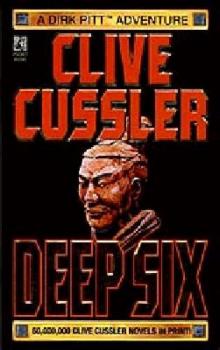 Deep Six
Deep Six Odessa Sea
Odessa Sea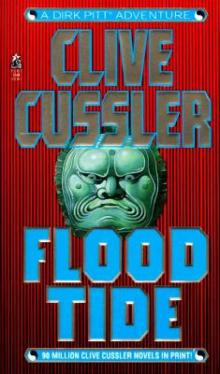 Flood Tide
Flood Tide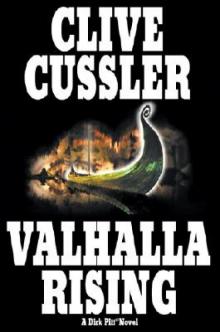 Valhalla Rising
Valhalla Rising Thriller 2
Thriller 2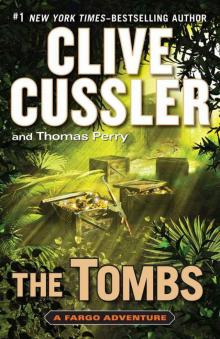 The Tombs
The Tombs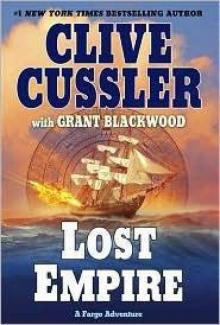 Lost Empire
Lost Empire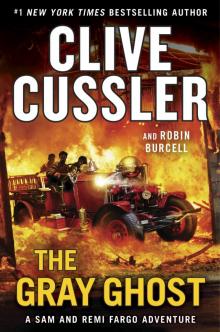 The Gray Ghost
The Gray Ghost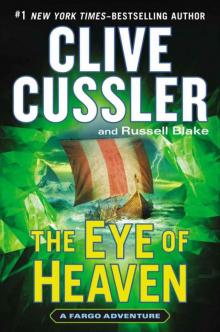 The Eye of Heaven
The Eye of Heaven Polar Shift
Polar Shift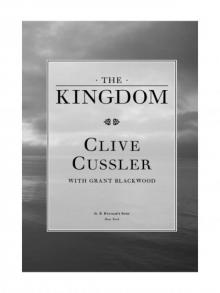 The Kingdom
The Kingdom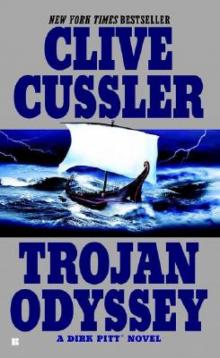 Trojan Odyssey
Trojan Odyssey Shadow Tyrants
Shadow Tyrants Nighthawk
Nighthawk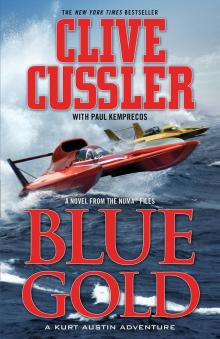 Blue Gold
Blue Gold Serpent
Serpent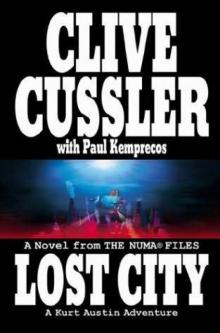 Lost City
Lost City The Gangster
The Gangster White Death
White Death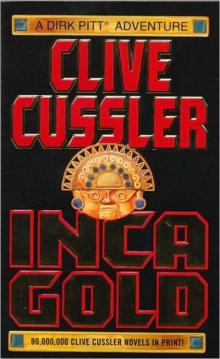 Inca Gold
Inca Gold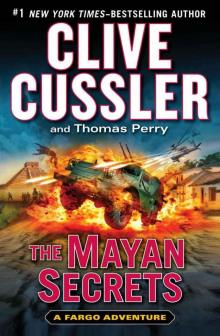 The Mayan Secrets
The Mayan Secrets The Pharaoh's Secret
The Pharaoh's Secret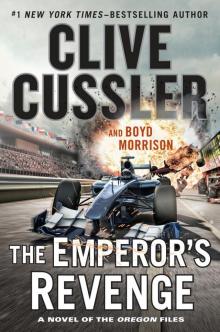 The Emperor's Revenge
The Emperor's Revenge Corsair
Corsair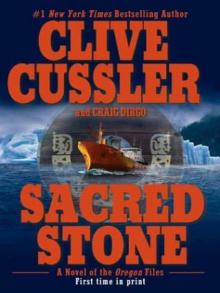 Sacred Stone
Sacred Stone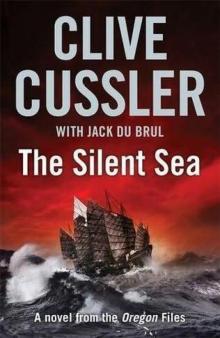 The Silent Sea
The Silent Sea The Rising Sea
The Rising Sea Black Wind
Black Wind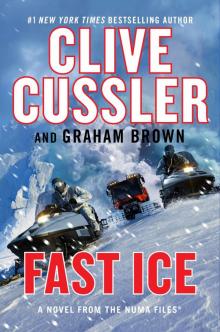 Fast Ice
Fast Ice Ghost Ship
Ghost Ship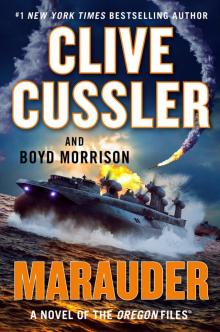 Marauder
Marauder The Thief
The Thief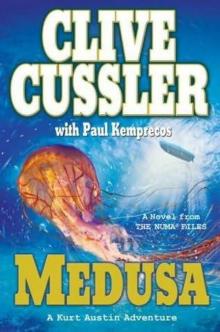 Medusa
Medusa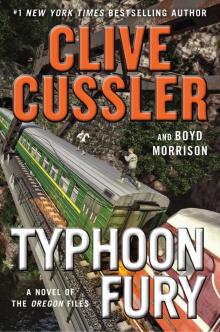 Typhoon Fury
Typhoon Fury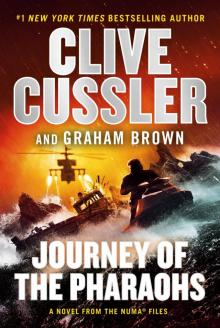 Journey of the Pharaohs
Journey of the Pharaohs The Navigator
The Navigator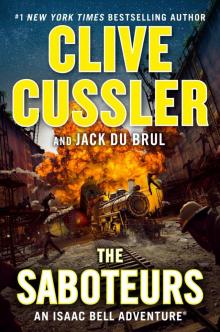 The Saboteurs
The Saboteurs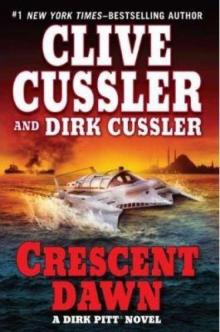 Crescent Dawn
Crescent Dawn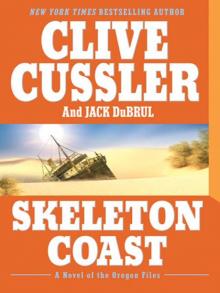 Skeleton Coast
Skeleton Coast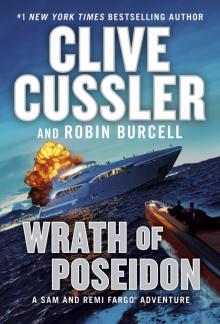 Wrath of Poseidon
Wrath of Poseidon The Mediterranean Caper
The Mediterranean Caper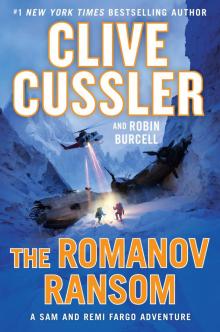 The Romanov Ransom
The Romanov Ransom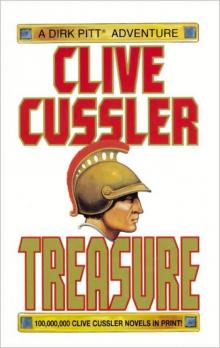 Treasure
Treasure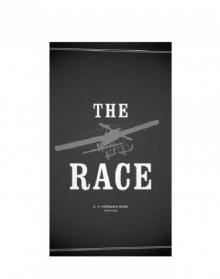 The Race
The Race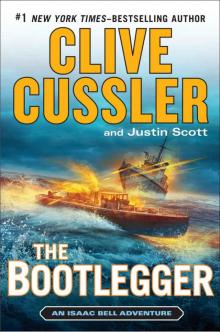 The Bootlegger
The Bootlegger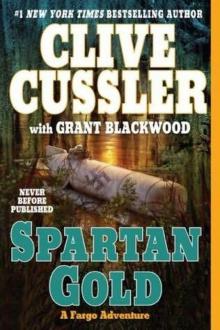 Spartan Gold
Spartan Gold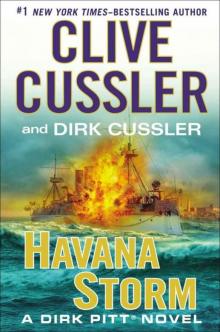 Havana Storm
Havana Storm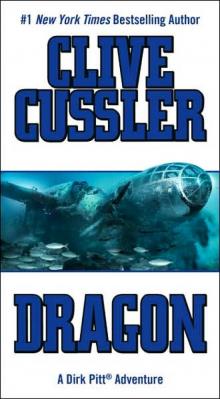 Dragon
Dragon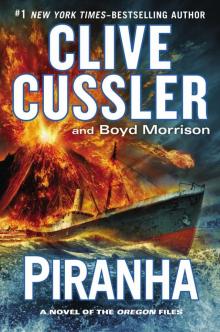 Piranha
Piranha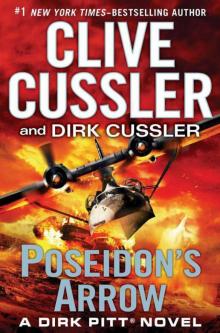 Poseidon's Arrow
Poseidon's Arrow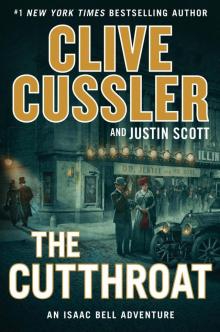 The Cutthroat
The Cutthroat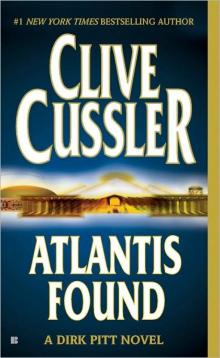 Atlantis Found
Atlantis Found The Jungle
The Jungle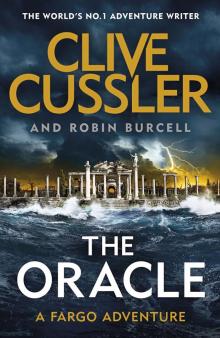 The Oracle
The Oracle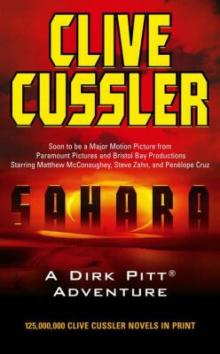 Treasure / Dragon / Sahara: Clive Cussler Gift Set
Treasure / Dragon / Sahara: Clive Cussler Gift Set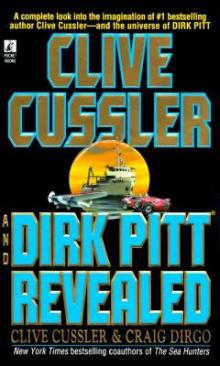 Clive Cussler and Dirk Pitt Revealed
Clive Cussler and Dirk Pitt Revealed The Sea Hunters
The Sea Hunters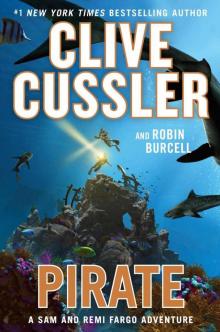 Pirate
Pirate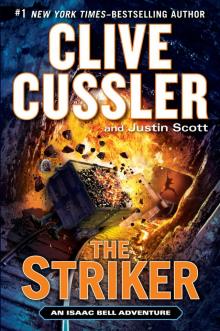 The Striker
The Striker Plague Ship
Plague Ship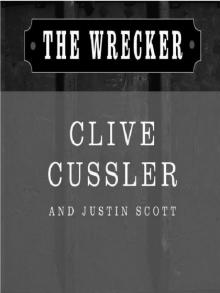 The Wrecker
The Wrecker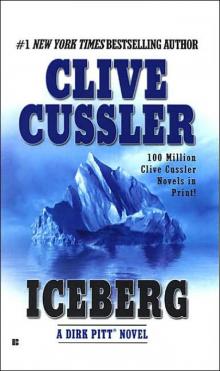 Iceberg
Iceberg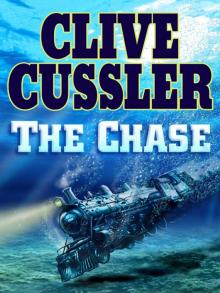 The Chase
The Chase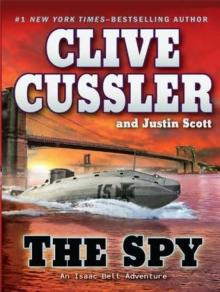 The Spy
The Spy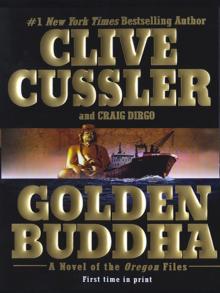 Golden Buddha
Golden Buddha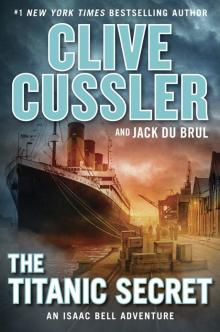 The Titanic Secret
The Titanic Secret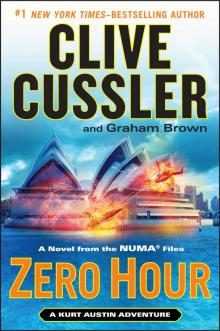 Zero Hour
Zero Hour Fire Ice
Fire Ice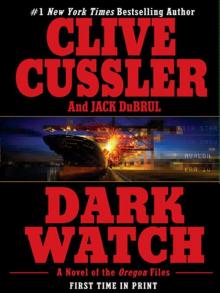 Dark Watch
Dark Watch The Storm
The Storm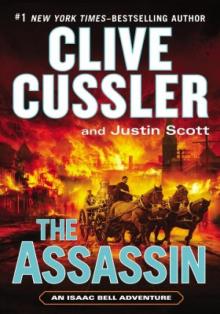 The Assassin
The Assassin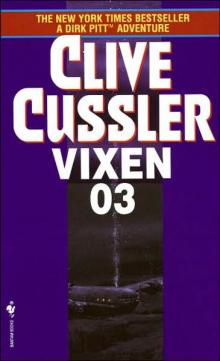 Vixen 03
Vixen 03 Arctic Drift
Arctic Drift Night Probe!
Night Probe! Cyclops
Cyclops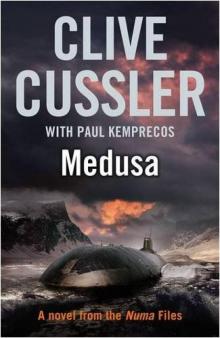 Medusa nf-8
Medusa nf-8 Shock Wave dp-13
Shock Wave dp-13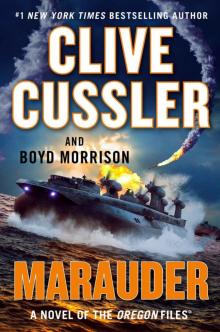 Marauder (The Oregon Files)
Marauder (The Oregon Files)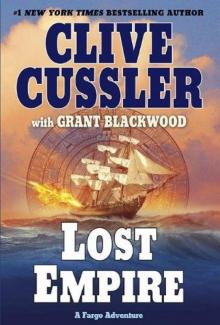 Lost Empire fa-2
Lost Empire fa-2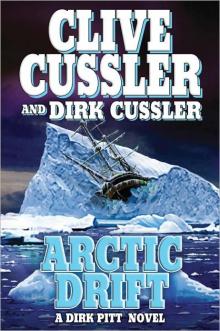 Arctic Drift dp-20
Arctic Drift dp-20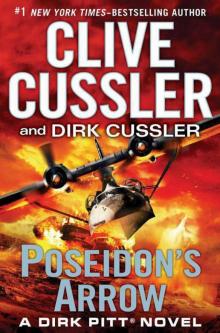 Dirk Pitt 22 - Poseidon's Arrow
Dirk Pitt 22 - Poseidon's Arrow Treasure of Khan dp-19
Treasure of Khan dp-19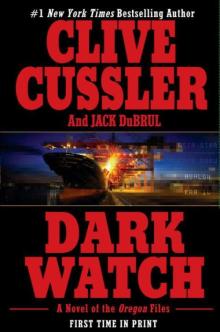 Dark Watch of-3
Dark Watch of-3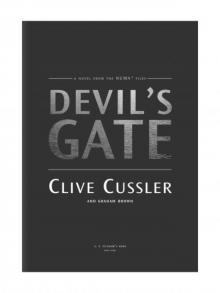 Devil's Gate
Devil's Gate The Sea Hunters II: More True Adventures with Famous Shipwrecks
The Sea Hunters II: More True Adventures with Famous Shipwrecks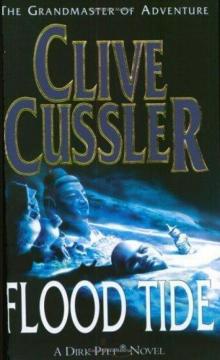 Flood Tide dp-14
Flood Tide dp-14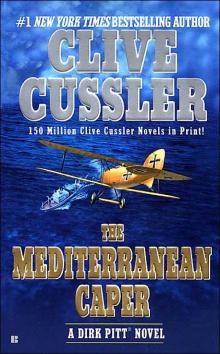 The Mediterranean Caper dp-2
The Mediterranean Caper dp-2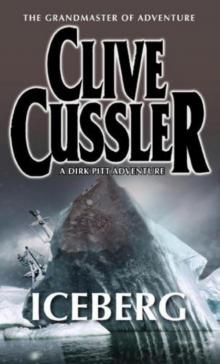 Iceberg dp-3
Iceberg dp-3 Sahara dpa-11
Sahara dpa-11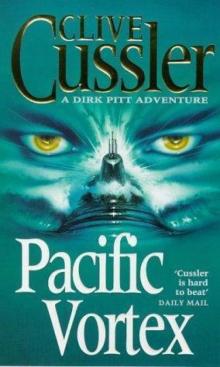 Pacific Vortex! dp-1
Pacific Vortex! dp-1 Deep Six dp-7
Deep Six dp-7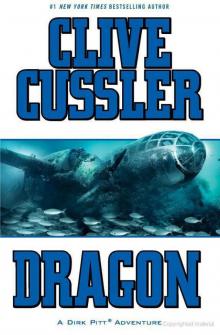 Dragon dp-10
Dragon dp-10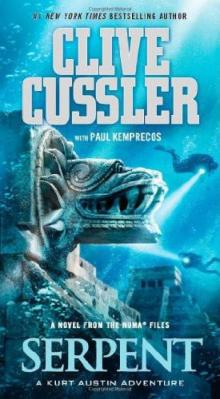 Serpent nf-1
Serpent nf-1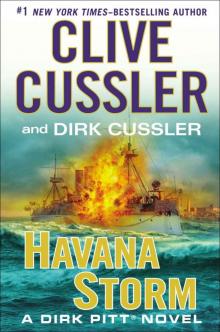 Havana Storm (Dirk Pitt Adventure)
Havana Storm (Dirk Pitt Adventure)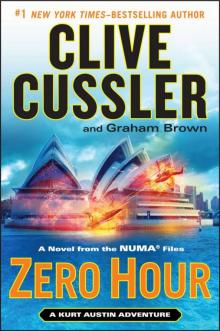 Zero Hour nf-11
Zero Hour nf-11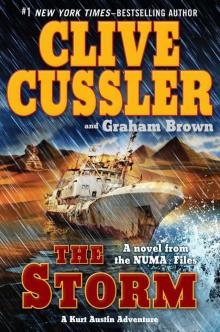 The Storm nf-10
The Storm nf-10 The Thief ib-5
The Thief ib-5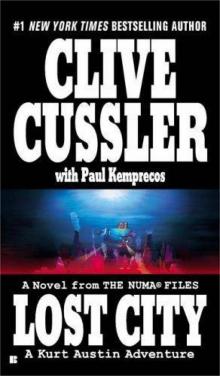 Lost City nf-5
Lost City nf-5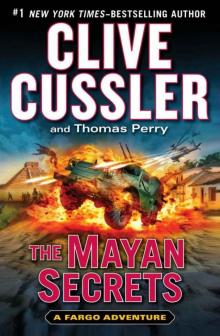 The Mayan Secrets fa-5
The Mayan Secrets fa-5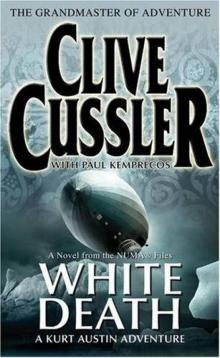 White Death nf-4
White Death nf-4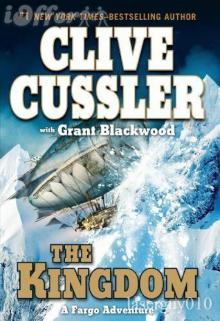 The Kingdom fa-3
The Kingdom fa-3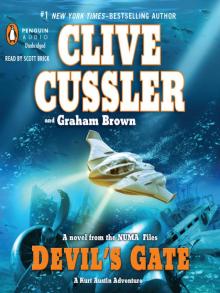 Devil's Gate nf-9
Devil's Gate nf-9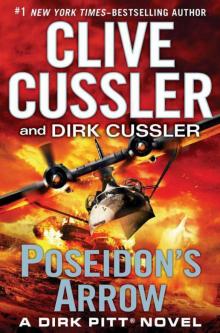 Poseidon's Arrow dp-22
Poseidon's Arrow dp-22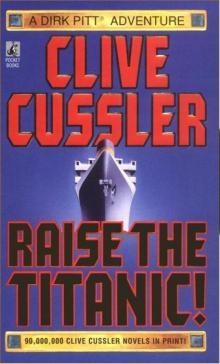 Raise the Titanic dp-4
Raise the Titanic dp-4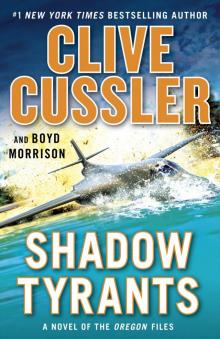 Shadow Tyrants--Clive Cussler
Shadow Tyrants--Clive Cussler Sacred Stone of-2
Sacred Stone of-2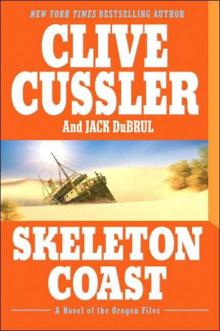 Skeleton Coast tof-4
Skeleton Coast tof-4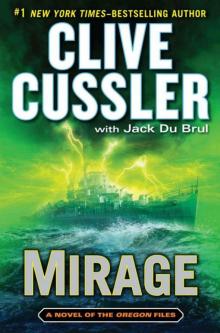 Mirage tof-9
Mirage tof-9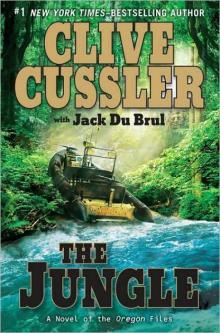 The Jungle of-8
The Jungle of-8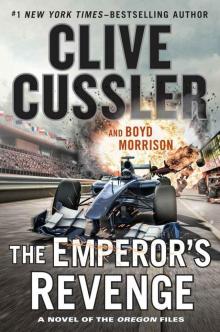 The Emperor's Revenge (The Oregon Files)
The Emperor's Revenge (The Oregon Files)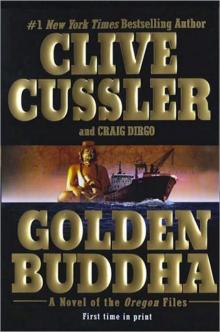 Golden Buddha of-1
Golden Buddha of-1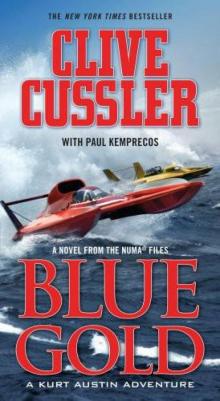 Blue & Gold
Blue & Gold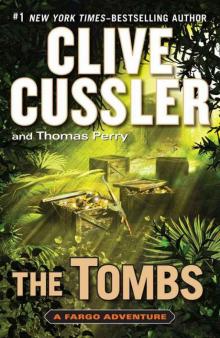 The Tombs fa-4
The Tombs fa-4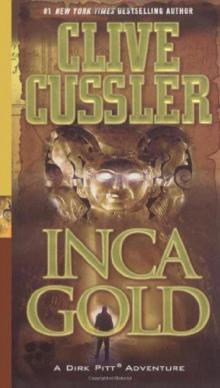 Inca Gold dp-12
Inca Gold dp-12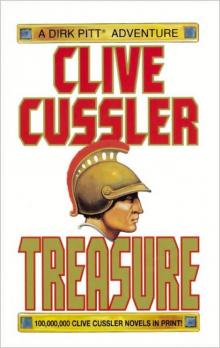 Treasure dp-9
Treasure dp-9 Atlantis Found dp-15
Atlantis Found dp-15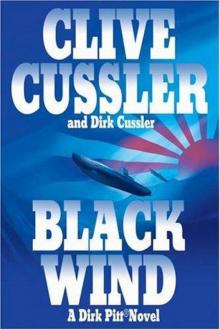 Black Wind dp-18
Black Wind dp-18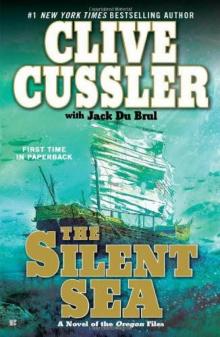 the Silent Sea (2010) tof-7
the Silent Sea (2010) tof-7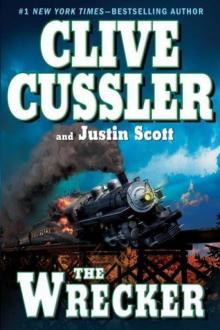 The Wrecker ib-2
The Wrecker ib-2 Fire Ice nf-3
Fire Ice nf-3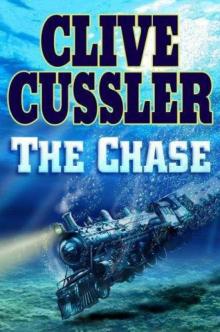 The Chase ib-1
The Chase ib-1 Sahara
Sahara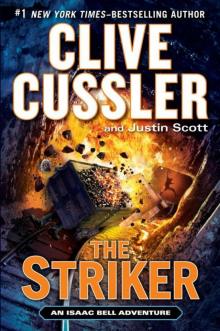 The Striker ib-6
The Striker ib-6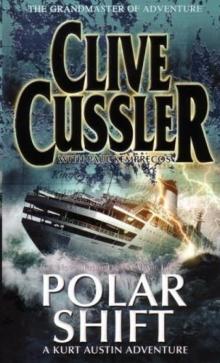 Polar Shift nf-6
Polar Shift nf-6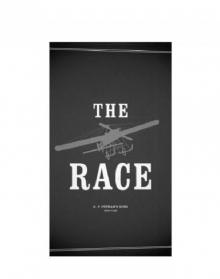 The Race ib-4
The Race ib-4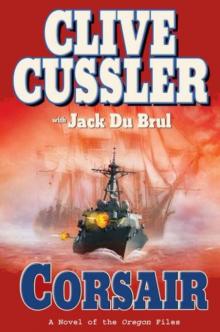 Corsair of-6
Corsair of-6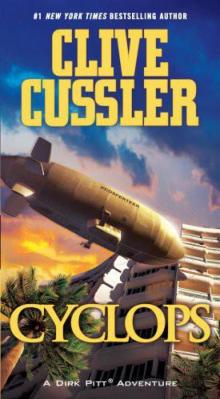 Cyclops dp-8
Cyclops dp-8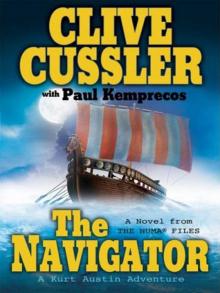 The Navigator nf-7
The Navigator nf-7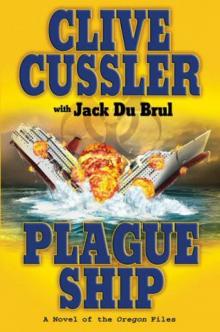 Plague Ship tof-5
Plague Ship tof-5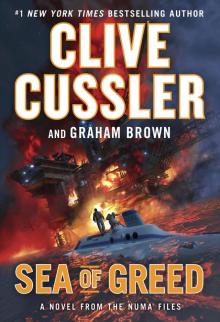 Sea of Greed
Sea of Greed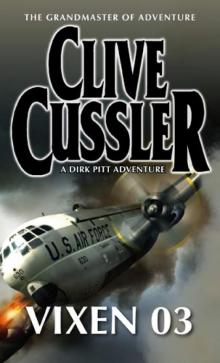 Vixen 03 dp-5
Vixen 03 dp-5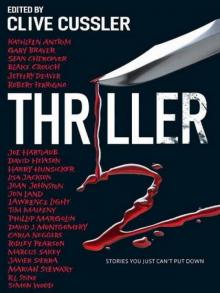 Thriller 2: Stories You Just Can't Put Down
Thriller 2: Stories You Just Can't Put Down